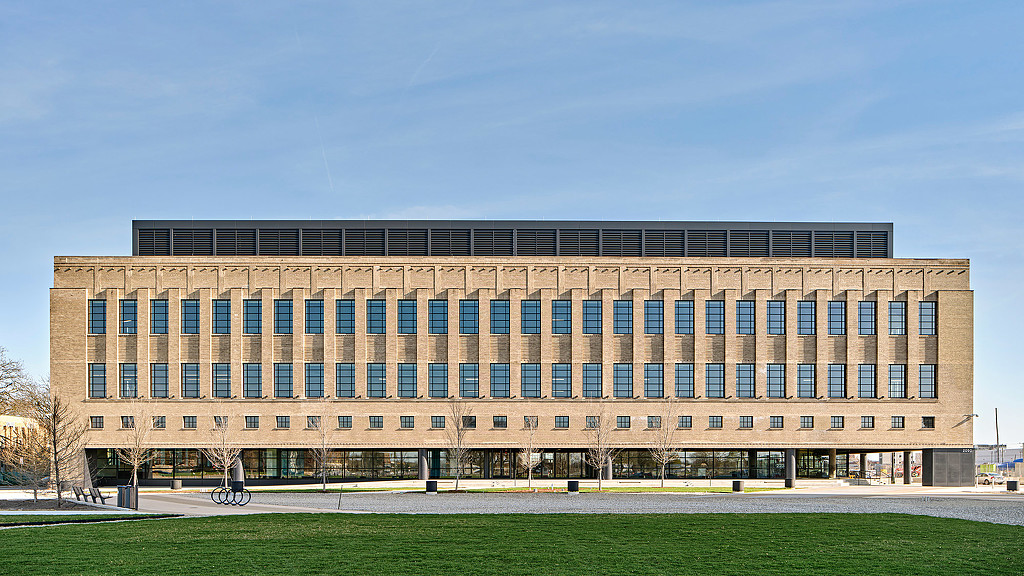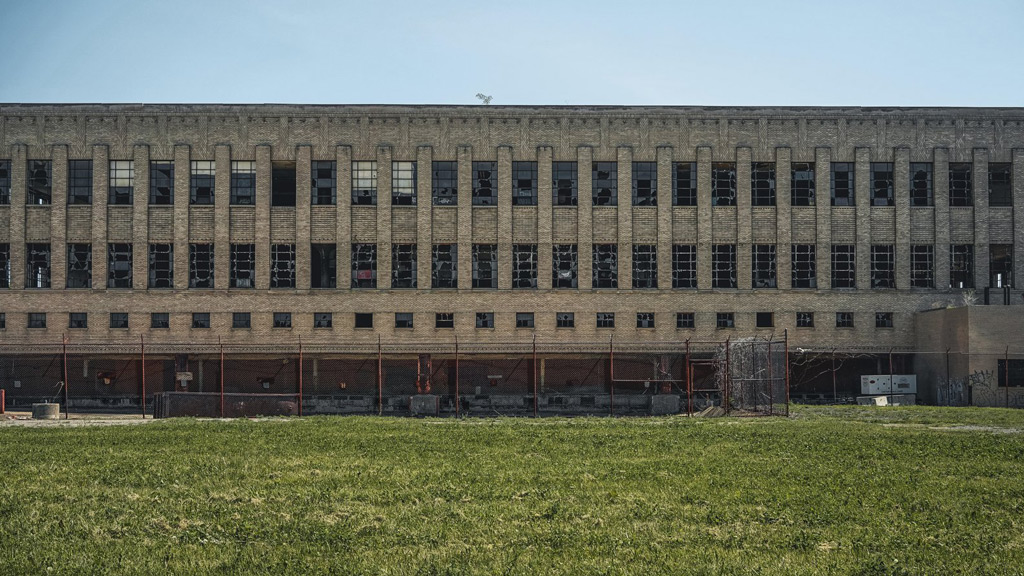Book Depository Jump-Starts Ford’s Detroit Innovation District
May 02, 2023 | By Lily Diego and John Waller
Editor's Note: This article was originally published in November 2020. It has been updated throughout to reflect the latest developments and construction progress.
As Ford continues to evolve its business for a new century, the company has returned to its roots in the Motor City as a launchpad for its plans to shape the future of global mobility, furthering Detroit’s revitalization effort. In its multi-year adaptive reuse and repositioning of the iconic Michigan Central Station and several surrounding landmark buildings, Ford aims to create a new mobility and innovation district in Corktown, one of Detroit’s oldest neighborhoods. The new district is designed to bring world-class talent, startups, entrepreneurs, and partners to join Ford in designing new mobility solutions for the way people and goods will move around tomorrow.
So it’s only fitting that the Book Depository, one of the first buildings to open in the Michigan Central Development, isn’t your traditional office space; it’s positioned for the future of work, pushing boundaries of comfort beyond code. Designed as a nexus for idea exchange, the building has been repositioned to meet the demands of today’s top innovators with an adaptive and flexible workplace, ample access to daylight, open and internal connectivity, destinations for exchange. Its design allows for unhindered connection, laying a foundation for a fluid and interconnected district where circulation is expanded for humans, machines, and robots, and facilities and resources are fully inclusive. The ground floor is an internal, engaging intersection connecting the overall development, serving as a boulevard for the community, industry partners, and the neighborhood.
The respectfully revitalized 1930s Albert Kahn building, originally built as the city’s main post office and then used as a Detroit Public Schools Book Depository, is emblematic of today’s evolving workplace — a building that offers the foundation and fabric for users to create a blended, collaborative environment where the lines between traditional desking and adjacencies are increasingly blurred. Now open, the Book Depository brings together emerging technology companies, researchers, and designers from tenant Newlab, to develop, test, and launch new mobility solutions in a fluid space designed to flex for future needs.
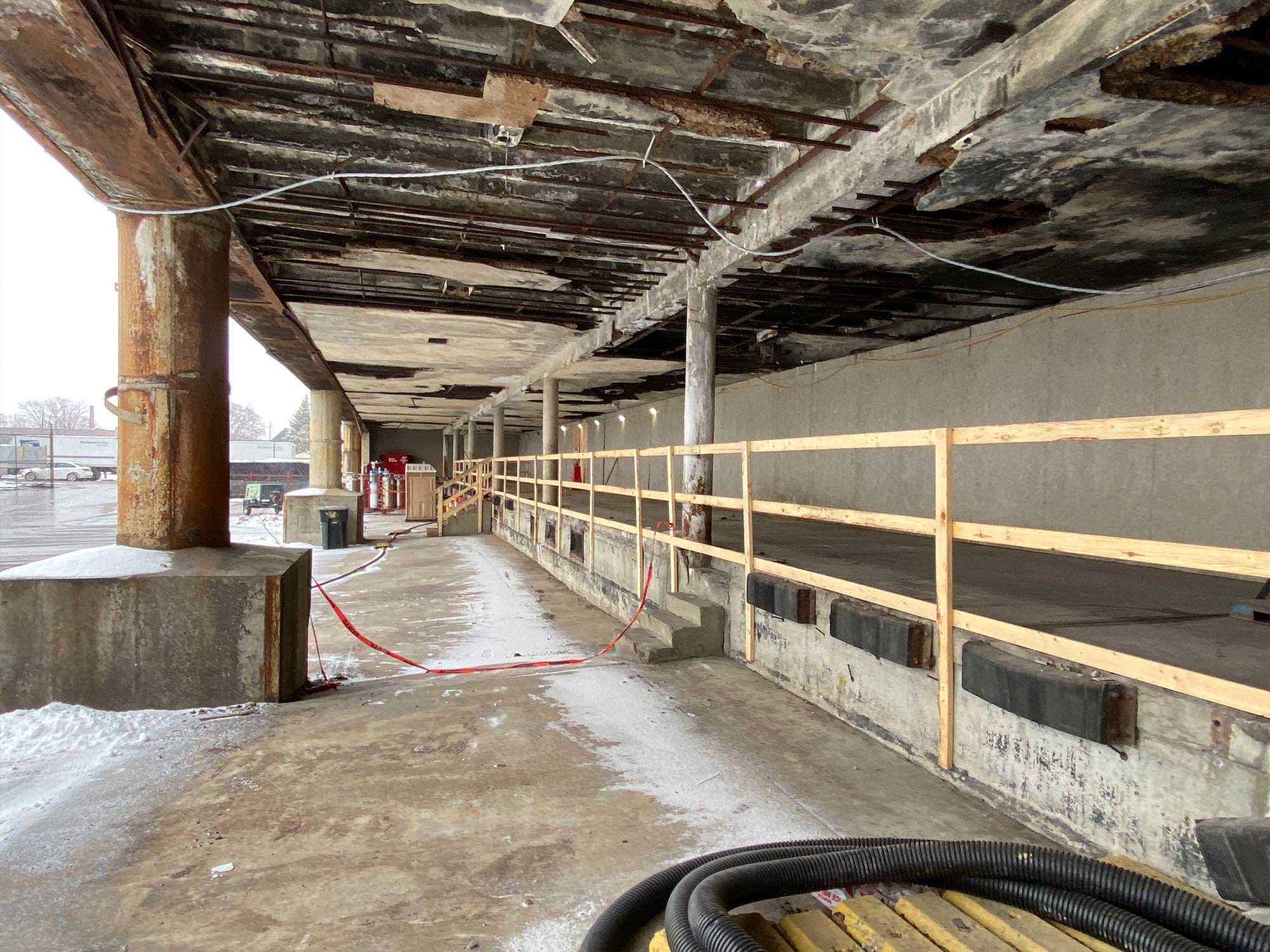
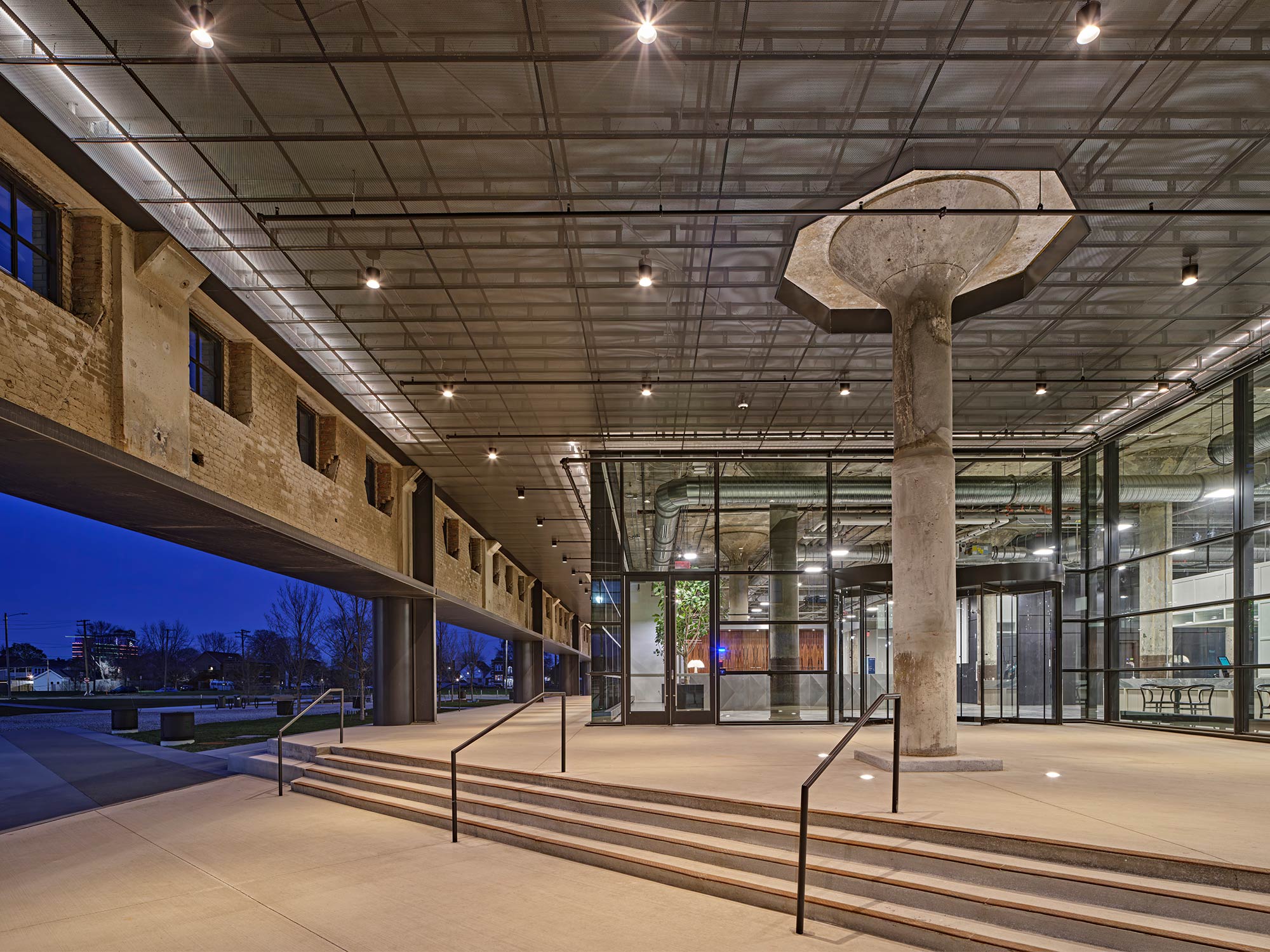
Repositioned for today with reverence to the past
By leveraging the existing loading docks as the location for the new main entry and expanded walkway, or paseo, the Book Depository gained a greater transparency and visibility to the activity happening within, blurring the edge between exterior and interior. Set within a blackened steel portal frame, the new, full height glass walls create an inviting presence and extend to the purposefully placed entries that connect to the larger district plan and adjacent plazas and buildings.
A building-height atrium and central connecting stair was the most impactful architectural intervention within the interior, allowing equitable access to daylight throughout the entirety of the space, rather than only along the perimeter, and creating a social platform supporting collaboration and idea exchange.
Throughout the design process, the team embraced the history of the building, juxtaposing modern elements with the strength and structure associated with Kahn’s work. Existing concrete and brick were historically uplifted and are conversant with new steel and glass modern elements, signifying areas of welcome and connection, and a seamless cohesion between old and new.
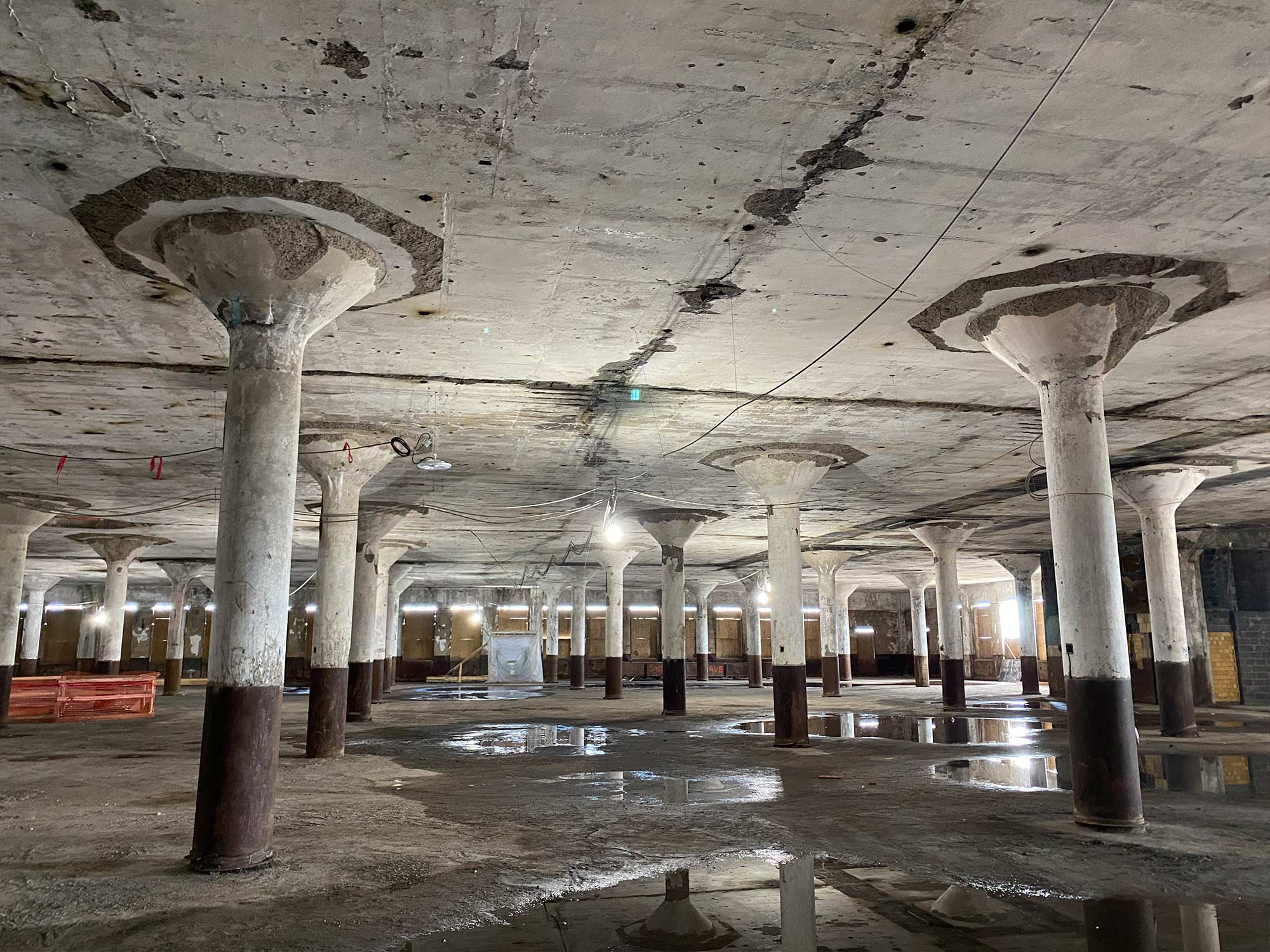
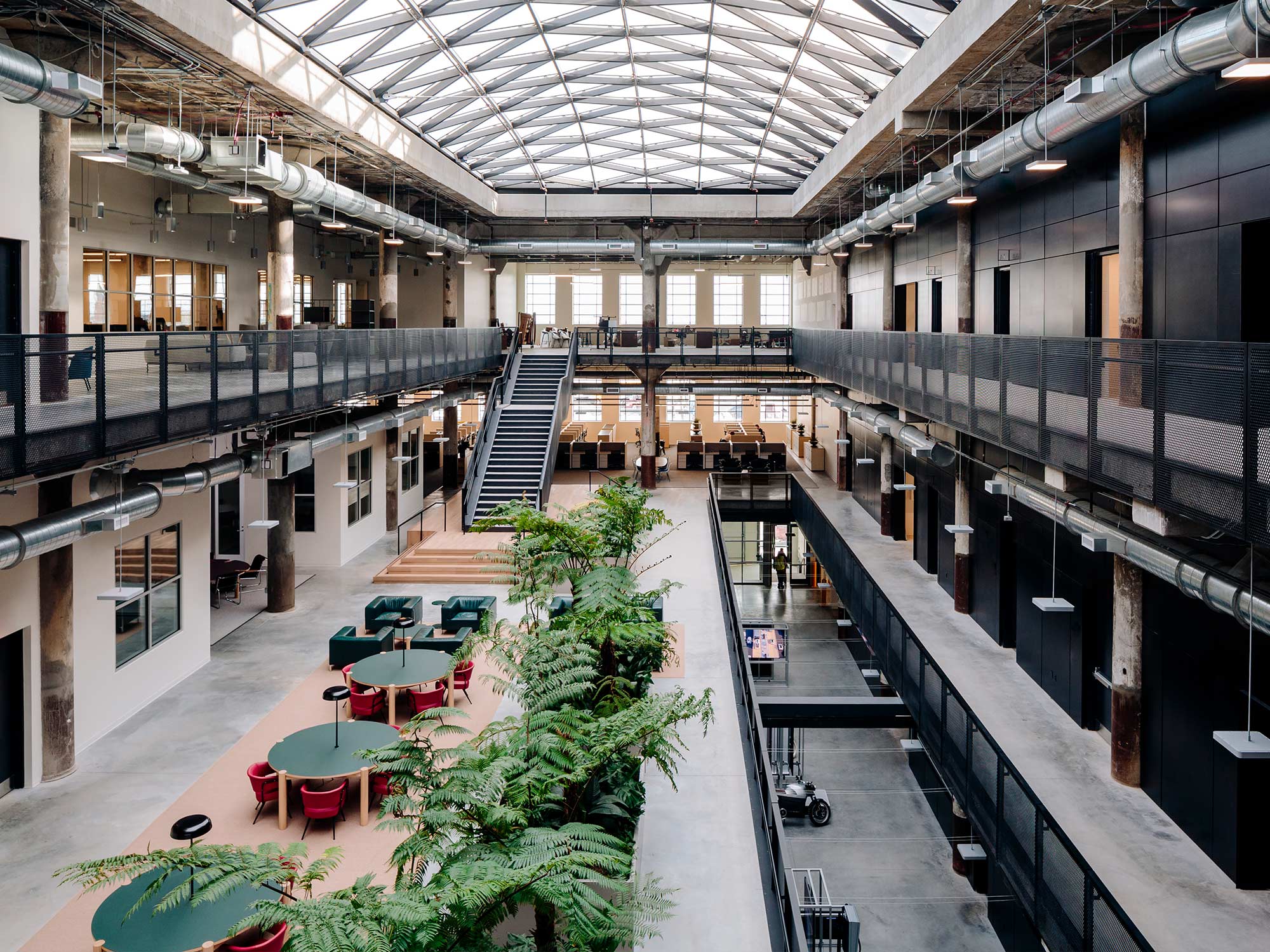
A building designed to support flexible, hybrid experiences
With built-in flexibility and choice as a cornerstone of the design, the Book Depository features thoughtfully designed decentralized cores anchoring the atrium space to support an adaptable work floor for diverse partner groups to cohabitate, allowing for a multiplicity of uses, so workers can collaborate, synthesize, and push ideas forward. Even before the pandemic, Ford had been exploring distributed and hybrid work, and the Book Depository extends this ethos to support a diversity of tech-enabled workstyles. From conferencing to strategy rooms, robotically-enabled labs and workshops, all spaces allow for real-time digital and virtual working among remote team members and collaborators.
For innovation to occur, a sense of proximity is key. A highly visible connecting stair within the open atrium connecting levels 2 and 3 was designed to bring people and ideas together. With bigger floor plates and thoughtfully placed decentralized cores, the repositioned building frees up space for a larger, flexible workspace to spur collaboration and unexpected collisions among colleagues.

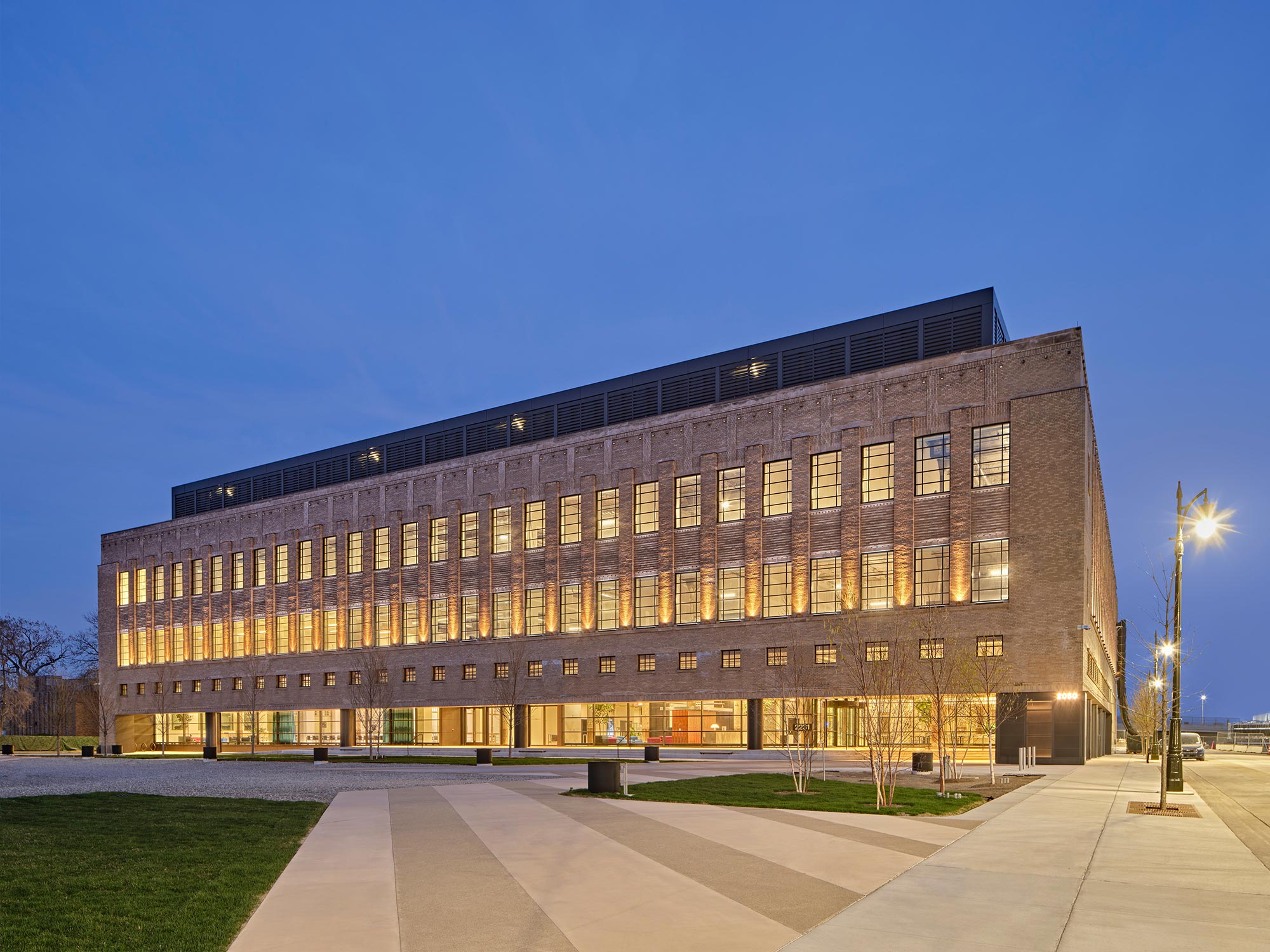
Forging community connections
When it’s completed, Michigan Central will be a node on the State of Michigan’s proposed connected and autonomous vehicle corridor running from Ann Arbor to Dearborn to Detroit, linking the district to the region’s other centers of automotive research and testing. The Book Depository will act as a gateway to Michigan Central Station and the first-of-its-kind mobility platform on the elevated railroad tracks behind it, as well as multiple outdoor plazas and open spaces that weave into the neighborhoods.
The new mobility innovation district represents Ford’s commitment to the city of Detroit, its residents, and a nod to the critical role transportation plays in revitalizing cities of the future. Being in the heart of America’s comeback city will help attract talent, startups, and engineers who want to tackle these challenges together with the automaker. Through meaningful, dynamic placemaking, we hope The Book Depository and its surrounding ecosystem will act as a community connector that will bring an influx of diverse people who will drive ideas forward together, while also bringing new vitality and resilience to the surrounding community.
For media inquiries, email .
